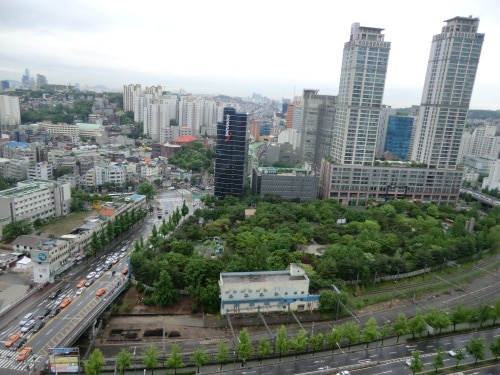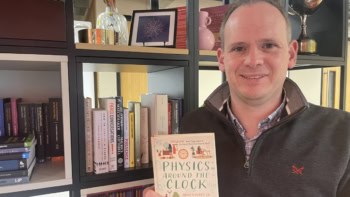
By Matin Durrani
The weather today in Seoul started off damp and cool as I made my way to the City Hall subway stop and then headed left down a little side street to the British Embassy. I was there to meet Gareth Davies, who is head of science and innovation at the embassy.
His job is to boost links between UK and South Korean scientists and to help promote British science to the country’s community. It helps, I guess, that two UK-based physicists – Andre Geim and Konstantin Novoselov – shared the 2010 Nobel Prize for Physics for their work on graphene, the 2D wonder material that is getting all the major electronics companies, including Samsung, licking their lips at what this substance could do. With applications including ultra-transparent graphene-coated touch-screen phones, it is not surprising that firms like Samsung are zoning on this new material as the source of massive new innovations in the electronics and IT markets.
In fact, I’ve heard quite a bit about graphene during my trip to Korea, particularly from Byung Hee Hong, a chemist at Seoul National University whom I met yesterday in a visit to that institution that had been arranged for me by physicist Je-Geun Park. Hong is a real livewire and a fascinating guy with lots of fingers in lots of pies. Apart from working closely with Samsung, he advised the EU on its new graphene flagship project, has set up his own business selling graphene-making equipment, and spoke in 2010 at a Nobel Symposium on graphene – just months before the Nobel prize was awarded for graphene. Curious timing. Hong will be speaking at an intriguing upcoming conference in London on commercial applications of graphene so you can catch him there if you’re interested.
Michael, meanwhile, has just come back from an interview with Se-Jung Oh, a physicist who is president of a major new $5bn, five-year programme in Korea to set up 50 Institutes for Basic Science by 2017. Modelled on the Max Planck institutes in Germany, they will be focused efforts on fundamental research, with at least 30% of staff from overseas. They will be entirely independent of the Korean government, with one director and four of five heads of department, each of whom will have 10 years of guaranteed funding worth at least $10m for 10 years. It just underlines to me how far South Korea has come in recent years that it has the wherewithall for such ambitious projects.
I’m now off to meet Cheol Eui Lee, president of the Korean Physical Society in the Seoul suburb of Gangnam, made famous of course by PSY’s hit of 2012 “Gangnam style”. It’s a lively, modern place lit up with neon signs and lots of places to eat and drink. We’ll be talking strictly physics of course.



